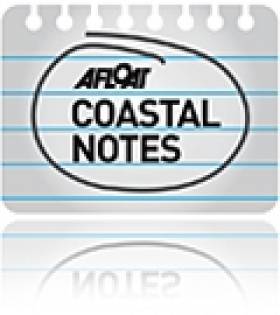Displaying items by tag: Dublin Bay Cruises
#DublinBayCruises – In addition to news of a boost in Dun Laoghaire Harbour in attracting up to 14 cruise callers this season, a new excursion operator Dublin Bay Cruises are to run trips to and from Howth Harbour, writes Jehan Ashmore.
To book your trip call 353 1 9011757 and tell them you read about it right here, on Afloat.ie !
Dublin Bay Cruises are to begin excursion trips in early April. The 90 minute trips will take in the expanse and scenic vista of Dublin Bay, passing coastal landmarks along with views of Dalkey Island in the south of the bay, Howth Peninsula to the north and Ireland's Eye off Howth Harbour.
During the cruise, passengers will have an audio guide to explain and understand how and why the modern city of Dublin developed to become the capital city of Ireland.
The itinerary departing Dun Laoghaire Harbour will be as follows: the Joyce Martello Tower – Dalkey Island – north cross the bay towards Howth head – Bailey Lighthouse-Irelands Eye-Howth Harbour.
On trips departing Howth Harbour the itinerary is in reverse: Irelands Eye- Bailey Lighthouse-south cross the bay towards Dalkey Island-Joyce Martello Tower and arriving to Dun Laogaire Harbour.
The cruise is offered as a one-way trip (in either direction) between the harbours. Passengers will be able to make their way back to the city-centre from either Dun Laoghaire or Howth harbours by taking the DART train or use of other public transport links.
Both DART stations in Dun Laoghaire and Howth are less than 300m from the berthing locations.
Dublin Bay Cruises are to operate the excursion vessel 'St. Bridget', a 26m steel-hulled vessel with a capacity for around 100 passengers. There will be a bar facility also serving light refreshments.
Interestingly, bicycles will also be carried, providing another travel mode to continue at either destinations and bringing further flexibility.
The cruise trips will also bring a whole new dynamic to crossing Dublin Bay, linking two large sailing centres and in the case of Howth Harbour which has a large fishing fleet and seafood restaurents.
St. Bridget will be the first commercial vessel to use Dun Laoghaire Harbour's new cruise-tender pontoon which was installed nearly a year ago, last April.
She is one of five passenger ships owned and operated by Dublin Bay Cruises, a sister company of Doolin2Aran Ferries which operates from the Co. Clare harbour. Earlier this month, the go ahead was granted for the construction of a new pier.
The cruise-tender pontoon located in Dun Laoghaire's 'Coal' Harbour was installed primarily to cater for the return of cruise ships sector.
The most impressive cruise caller will be the giant Cunard liner Queen Mary 2 of 151,400 tonnes, which is to make her debut call to Dublin Bay in mid-May with an 'anchorage' call. She has a capacity for 2,620 passengers and more than 1,200 crew.
In total Dun Laoghaire Harbour is to welcome up to 30,000 passengers and crew ashore in 2013.
The increase in the level of cruise calls is notable, considering last year's first season after a gap of several years, generated just two cruise calls. Both in which were carried out by the same vessel, the diminutive cruiseship Quest of 1,180 tonnes which has a capacity of only 50 passengers.





























































